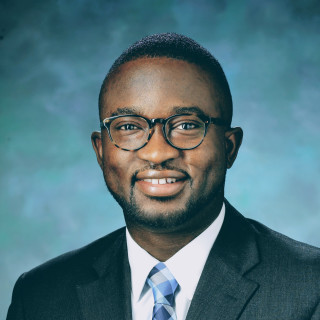
Whether you’re still in training, at the nascent stage of a career in medicine, or nearing retirement, there is no doubt that AI is going to impact your life as a physician. US tech giants Apple, Amazon and Google are heavily investing in AI for healthcare, and some technologists have boldly proclaimed that AI will replace 80% of physician tasks and eventually outperform doctors. So what will the future doctor do?
This question raises an existential conundrum for some specialties more than others. Some have even suggested that AI will lead to new specialties and may replace a few others. That so much debate has ensued regarding which specialties will be most susceptible to the AI revolution makes one wonder about the role technology plays in shaping the evolution of medical specialties.
To understand which specialties may be future proof to the imminent AI take-over, perhaps, a review of forces that have historically shaped medical specialization and influenced survival of medical specialties may be apropos.
Scholars of the history of medicine propose three main models (1, 2):
1. The natural evolution model: Specialization was a natural consequence of the collective desire to expand medical and scientific knowledge. This prompted clinicians and scientists to focus on specific diseases to allow for more rigorous empirical observation of clinical cases. Subsequent specialization catalyzed exponential growth in knowledge, which then lead to further sub-specialization since it was impossible for any single practitioner to master all aspects of a developing specialty.
2. Administrative model: Specialization arose out of the need to manage large populations by categorizing individuals based on clinical presentation — identical cases were put in the same class and different cases put in other categories.
3. Market model: Specialization arose within the larger societal context of occupational division of labor and free market competition in capitalist society. Where capitalist society went, medicine followed.
So how do these models regarding the history of specialization help you figure out whether your specialty is future proof against the #AIrevolution or whether your specialty is at risk of extinction?
First, the historical account helps us put things in perspective. Every age has experienced its share of what the denizens of the era considered revolutionary. In the early years of medicine, new, wonder-provoking technologies included now-commonplace essentials such as the microscope, laryngoscope, stethoscope, and X-ray.
Our generation is enthralled by AI, and, although the particularities and scope of AI may be different, the principle remains the same: the effect of technology on any medical specialty has been and will continue to be shaped by panoply of intellectual, socio-legal, geographical and political forces. To think that the tech-du-jour could by itself lead to the demise of one specialty over another is to fail to understand the dynamic complexity of factors at work.
Second, the hype surrounding AI is not new. Every new technology arrives with a triumphant herald; this behavior just highlights our human predilection for novelty. Most revolutionary technologies throughout the history of medicine have been driven by the collective desire to expand medical and scientific knowledge. Technology serves this purpose among others, and AI’s role will be no different. As the history of specialization shows, with expansion in knowledge comes the need for further division of labor (sub-specialization) as well as better tools (ways) to organize the new body of knowledge.
Related to the above, AI will create more jobs, perhaps even new subspecialties, for doctors, not fewer. The impact of AI on any specialty will be partly a byproduct of how proactive the specialists are in utilizing the technology within their scope of practice. Cardiothoracic surgery and interventional cardiology vis-à-vis open vs. endoscopic heart procedures provide historical cues on how technology impacts a specialty. As cardiologists co-opted and perfected the technology for endoscopic heart procedures, their value within the market place rose dramatically, leading to expansion in this subspecialty. In contrast, the market for open-heart surgery continued its downward trajectory to the point where some have questioned whether heart surgeons are a dying breed.
Just as generalists from the early days of medicine in the 1800s could not stop the emergence and evolution of specialists, the lesson is not ardent resistance to change. Rather, for any field of medicine to survive, it must evolve by strategically adapting to new technology. In addition, medical specialty groups should consider favorably realigning key geopolitical, cultural and socio-legal factors towards achieving the central narrative of their particular specialty.
What would this look like in practice?
Consider a specialty like Physiatry, for example. A fundamental aspiration of this field of medicine is the restoration of function, full re-integration into society and enhanced quality of life for patients. To achieve this goal in the new era of AI, the field could proactively seek legislative support for policies that facilitate access to affordable AI-powered technologies like wearables for remote monitoring of health and physical activity, exoskeletons and sensory garments to enhance function in mobility-limited patients and smart helmets for concussion prevention in contact sports.
Since the field trains experts in adaptive health technologies, Physiatry could invest in developing leaders who will shape the national dialog on human performance augmentation, and can speak to the associated ethical, social and cultural implications. They could even help guide and inform federal regulation of the evolving augmentation technologies. In other words, the specialty ought to lead the charge towards utilization of AI within its own domain, in a way that best serves the field’s stated directives: recovery, restoration and maintenance of health.
Some of the above strategies may also apply to other specialties but the implementation may vary from one group to the next. This is due to the wide range of clinical domains, goals, culture and scope of practice, which are all shaped by various legal and economic forces.
Once these forces (reimbursement, licensing, regulation, etc.) are well aligned, AI will be more of a catalyst of progress than a negative disruptor or harbinger of doom. Of course, the promised land won’t come easy. It may mean that practitioners within particular specialties need to acquire a new set of skills while redefining their comparative value relative to other competing specialties.
On the last point, professional entities governing each specialty and its physicians have to identify their groups’ proposed value and narrative and decide whether this needs to evolve with the times or risk being left behind. Would a non-physician practitioner be able to fulfill aspects of their job? If yes, what aspects are uniquely suited to the physicians only, and what aspects can be done by others, or, for that matter, AI?
If 80% of a physician’s tasks will be replaced by AI, could anyone besides the physician or specialist perform 20% of the remaining tasks? Certainly, the role of reimbursement policies, occupational licensing, and support of law, state and federal agencies in defining or influencing a specialist group’s scope of practice cannot be ignored.
While it may be true that physicians within any specialty need to be able to establish a viable place in the labor market, self-interest and financial gains alone will not be sufficient safeguards for future survival of practitioners within the group, regardless of AI’s influence. Just as changes in population health needs influenced the rise of some specialists, each specialty now has to consider what population health problems its practitioners are uniquely trained to address. This is purely demand-supply economics.
Within the US, the CDC currently identifies the following among the most pertinent areas of public health concern: mental illness and drug related health problems, nutrition, obesity and lack of physical activity, cardiovascular disease and stroke, cancer and infectious diseases. Consider whether your specialty is uniquely positioned to tackle any of these major health problems. Where are the areas of overlap with other specialties? How well could physicians within your specialty adapt to changes in the American population’s health needs?
Answering this question borders on another related matter: practitioner demographics.
Depending on the age, gender and ethnic skew, some specialties may need to do more recruitment of younger and more diverse talent to its group than others. Recent reports indicate that more women than men continue to enroll in medical schools. This is a good thing since it presents an opportunity to potentially diversify those specialties that have historically excluded women and were traditionally considered “the old boys’ club.” Whether and how specialties respond to the changing times and demographics will undoubtedly have significant ramifications.
In the current state of physician training, marred by high suicide rates and burnout, it is no surprise that young prospective doctors consider lifestyle issues and intrinsic rather than extrinsic rewards as a topmost priority in choosing a specialty. Younger doctors and trainees also take cues from their mentors and supervisors. Studies indicate that a mentor’s enthusiasm for their chosen field often influences students’ choice of specialty.
Passion is infectious, and trainees who experience high quality interactions with mentors and supervisors during training may be more inclined to follow the same path. So, if you’re a physician who is far advanced in your medical career, your commitment, passion and mentorship, may influence enrollment of future trainees, and ultimately the survival of your specialty.
To come full circle: will your specialty survive the AI revolution?
It depends on a lot of different factors, a few of which have been discussed in this essay. A major take-home point from this piece is that any attempts at answering the above question must be placed within the historical context of how technology has shaped medicine in the past. The historical trends seem to indicate that specialties committed to scientific inquiry and innovation may stand the best chance of survival in the future.
The AI arrow has already left the bow, and what matters now is how various specialties prepare to evolve with the times. While no one has a crystal ball to predict the future, what is clear is that technology alone will not be the decisive factor in whether physicians’ jobs, or for that matter, their related specialties, survive or perish.
Charles Odonkor, MD, began his love affair with medicine at Yale, finished his residency at Hopkins and postdoctoral fellowship at Stanford. He enjoys traveling, cooking and spending quality time with his wife. He is a Doximity Author and tweets@kcodonkorGH







